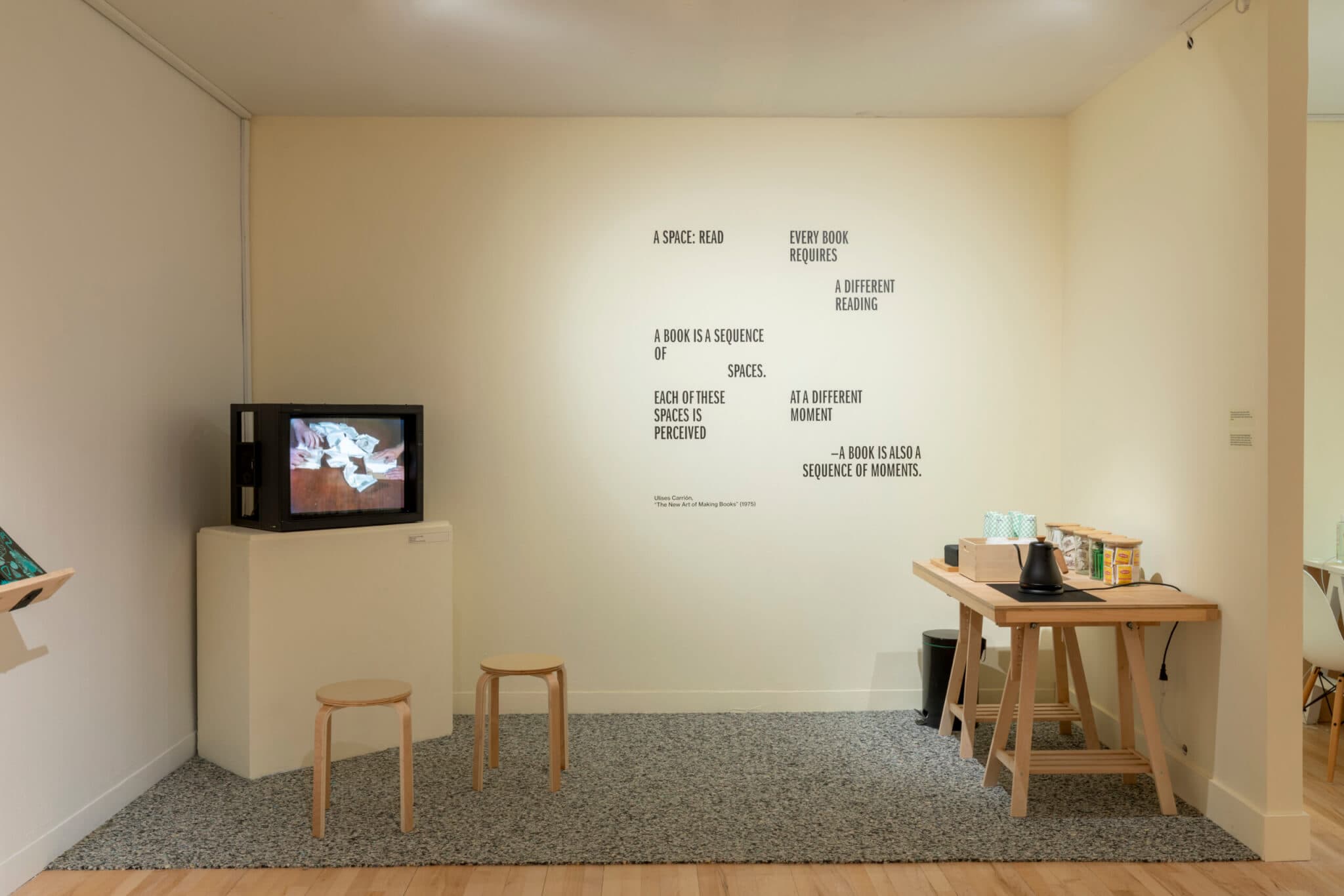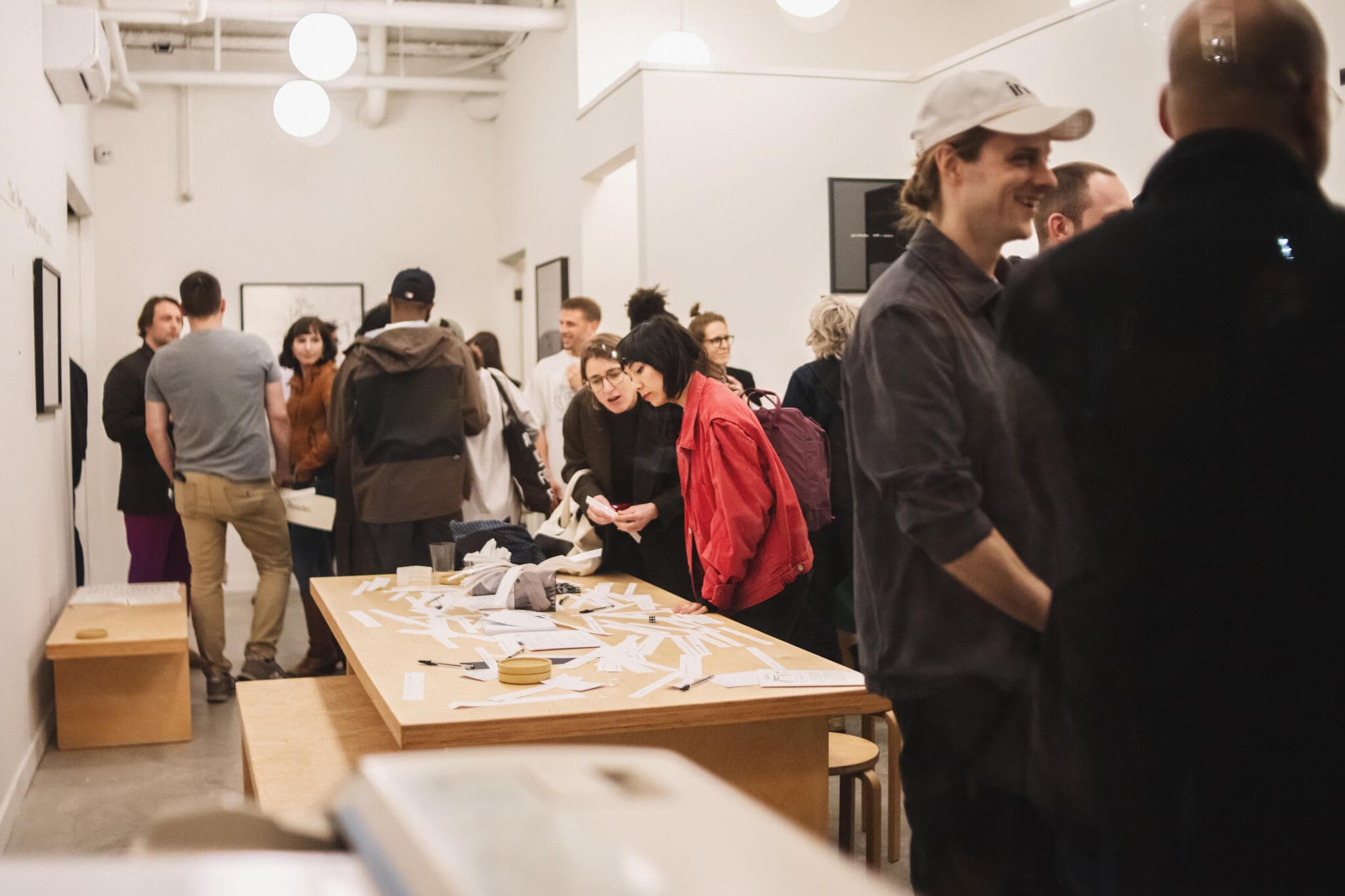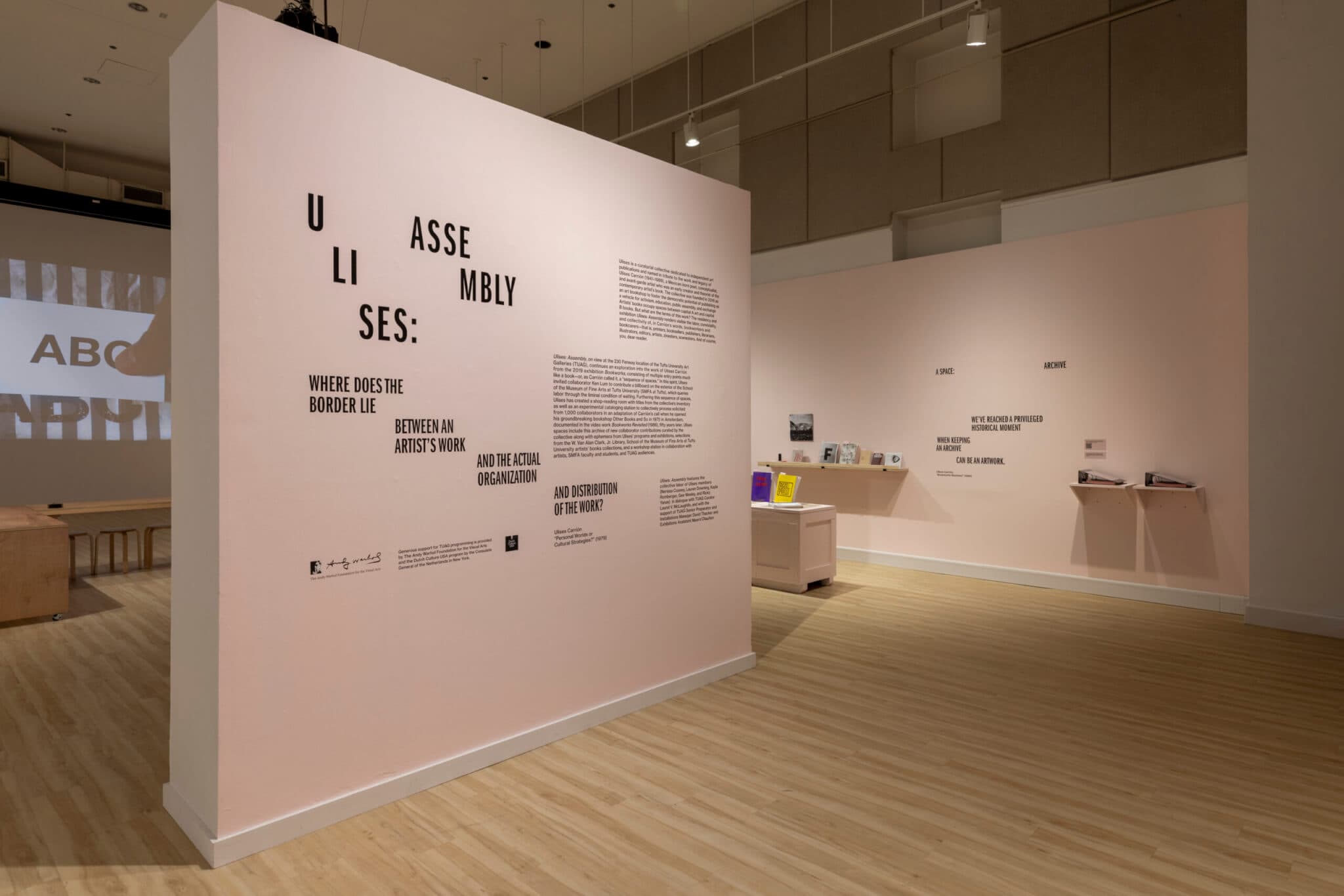Earlier this year, the Philadelphia-based collective, Ulises, asked 1,000 artists, artist collectives, and independent presses to send them an example of “the kind of books you make.” As one might expect from their expansive call, the resultant assemblage of books is greatly varied in both content and form, from zines and traditional artist books to a basketball, a tote bag, baseball hats, and a puzzle-like sculpture that audiences can assemble and disassemble. Constructed from paper, wood, metal, and cloth, the books represent an intentionally incomprehensive yet delightfully whimsical cross-section of independent book publishing today.
Online• Sep 24, 2024
A Bookstore, Collective, and Exhibition: At Tufts University Art Galleries, “Ulises: Assembly” Illustrates How Artists’ Books Refuse to be Defined
Following an open call for book projects from around the globe, the Philadelphia-based collective pays homage to the artist and theorist Ulises Carrión in an exhibition that makes collective labor visible.
Review by Jane Freiman
“Ulises: Assembly,” installation view, Tufts University Art Galleries, Boston, MA, 2024.Photo by Mel Taing. Courtesy of Tufts University Art Galleries.

“Ulises: Assembly,” installation view, Tufts University Art Galleries, Boston, MA, 2024.Photo by Mel Taing. Courtesy of Tufts University Art Galleries.

“Ulises: Assembly,” installation view, Tufts University Art Galleries, Boston, MA, 2024. Photo by Mel Taing. Courtesy of Tufts University Art Galleries.
Founded in 2016, Ulises is an independent publisher and curatorial collective that operates out of a bookshop and project space in Philadelphia. The collective’s members, Nerissa Cooney, Lauren Downing, Kayla Romberger, Gee Wesley, and Ricky Yanas, are artists and art workers who maintain individual practices while also publishing and curating the art books of a vast web of collaborators and friends. In “Ulises: Assembly,” their current exhibition at Tufts University Art Galleries at the School of the Museum of Fine Arts, Boston (SMFA), Ulises and curator Laurel V. McLaughlin pay homage to the collective’s namesake, Ulises Carrión, an artist, poet, theorist, and founder of Other Books and So in Amsterdam, the first bookshop intended specifically as a space for artists’ publications. The show includes a number of Carrión’s video works, including A Book (1978), wherein one pair of hands tears the pages out of a book while another uncrumples and restacks them into a facsimile of the original, intact book. In Bookworks Revisited (1987), Carrión himself appears on screen. He discusses the category of the artist’s book and displays a number of examples. Perhaps even more striking are the numerous quotations from Carrión’s esteemed textual works, which serve as the wall text throughout much of the exhibition, forming a kind of larger-than-life, non-linear manifesto in a bold, block font. Through this series of quotes, Carrión, via Ulises, articulates a philosophy of “bookworks” grounded in experimentation and collectivity that foregrounds the labor of bookworkers and bookcarers.
Ulises’s call for “the kind of books you make,” which make up the backbone of the show, is a response to a question the collective members themselves are often asked: What do you do? Their answer, which comes in the form of this exhibition, is both pragmatic and playfully evasive. Part residency, part public programming space, study room, bookstore, and archive, “Assembly” seems to be constantly ducking the question of what precisely it is, turning the viewer’s attention instead toward what it might be doing.

“Ulises: Assembly,” installation view, Tufts University Art Galleries, Boston, MA, 2024. Photo by Mel Taing. Courtesy of Tufts University Art Galleries.
So, what is “Assembly”? One of many possible surface-level answers is that “Assembly” is a “sequence of spaces,” as per the following quote from Ulises Carrión in “The New Art of Making Books” (1975) that adorns a wall near the entrance to the show: “A book is a sequence of spaces. Each of these spaces is perceived at a different moment.” “Assembly” is divided into four spaces, which are designed to be welcoming, multi-use, and always in flux. A SPACE: READ doubles as a bookshop and reading room, also containing a corner for visitors to drink tea while they peruse, read, or shop. Here, the increasingly popular trend of the post-show “reading room”—often filled with theory books and other texts related to exhibition themes—is flipped on its head. In “Assembly,” the reading room is not a loosely tacked-on addendum or afterthought, but an integral, and even introductory, part of the show itself. Books, then, are immediately and unapologetically elevated to the status of the art object.

“Ulises: Assembly,” installation view Tufts University Art Galleries, Boston, MA, 2024. Photo by Mel Taing. Courtesy of Tufts University Art Galleries.
Moreover, Ulises considers the various kinds of work involved in editing, publishing, creating, cataloging, selling, and stewarding books. A SPACE: CATALOG features a desk with a computer monitor and printer and, behind it, a precariously piled stack of cardboard boxes, packing sleeves, and bubble wrap. This sculpture highlights the remnants from the book submissions by friends and collaborators, turning the gaze from a final product toward the laborious process of acquiring and cataloging this archive, a selection of which is on display in A SPACE: ARCHIVE.
Each submission is cataloged in a book that records basic metadata about the objects: contributor, publisher, project title, year, medium, dimensions, website, and social media. Entry 001: “Agenda” (2016–2024) by Cooney, Downing, Romberger, Wesley, and Yanas foregrounds the labor of the collective itself, with the description stating, “Since 2016, Ulises has held weekly meetings and maintained a running agenda in Google Docs. We’ve printed out the unredacted agenda to represent the countless hours and labor our collective has invested in sustaining this project.” Indeed, Ulises is intentional about emphasizing the “work” in bookworks.

Ulises celebrated re-opening at its new Ray Philly location, 2024. Photo by Mo Smith.
While “archive” is a buzzword in the contemporary art world today, similar but distinct words like “collection,” “library,” and “index” appear with less frequency. What is the draw of this particular word choice to describe an amalgamation of objects or ideas? One possibility is that “archive” is richly affective in that it holds the shadow of ongoing abuse and extraction. “Archive” implies power and colonialism, and easily conjures up capital-H “History” in a deeply felt way. As a result, there are also the possibilities of resistance and repair contained within this word. In this moment of profound interest in “the archive”—especially in community archives, minor archives, and independent archives—many artists are taking up these questions in their work, and Ulises approaches them with both sincerity and specificity.
In “Assembly,” Ulises’s archive of book submissions is put into conversation with several holdings of the SMFA’s library, including seminal works from its collection of artist books, such as Theaster Gates’s “The Black Image Corporation” and Yusuf Hassan and Kwamé Sorrell’s BlackMass Publishing boxed set. Still, some questions remain. Where will this archive live? Who will maintain it and how? Will it be made accessible to the public after the closing of “Assembly”? Surely the collective has considered and addressed all of these questions, but their answers are not immediately apparent to the first-time visitor.

“Ulises: Assembly,” installation view, Tufts University Art Galleries, Boston, MA, 2024. Photo by Mel Taing. Courtesy of Tufts University Art Galleries.
What’s innovative or challenging about “Assembly” is the ambivalence that Ulises shows toward the traditionally assigned containers for a range of different book-related activities and the sites within which they occur, including libraries, archives, bookstores, newsstands, galleries, and museums. “Ulises: Assembly” is both deeply interested in the institution as a framework to view independent publishing and the art world more broadly, and, at the same time, entirely and boldly dismissive of the institutional bounds that determine the identities of the bookstore, exhibition, and archive. Here, once again, the collective takes their cue from Carrión himself, who wrote in “an end and a beginning” (1979):
“One of these strange forms is not working with your person as an individual but through an institution. Perhaps the word “institution” is the wrong word. Through a sort of impersonal thing that has a name… it could be a shop, a gallery, [library], you can call it an archive, institute, company, group, whatever.”

“Ulises: Assembly,” installation view, Tufts University Art Galleries, Boston, MA, 2024. Photo by Mel Taing. Courtesy of Tufts University Art Galleries.
Whatever, Carrión says. Whatever! As long as there are multiple people making things and making things happen together in a space, any concern for what institutional category we may be able to easily fit these efforts into becomes unimportant. Carrión not only theorized this porousness of categorical structures, but embodied this quality in his practice, as the founder of Other Books and So, as well as an artist, writer, and editor. “Ulises: Assembly” very much exists in this space of porousness. A thing—a book, a show, a shop, a collective—is not just one thing, but multiple things bound into one, existing as a kind of shifting assemblage across space and time. McLaughlin and Ulises call these various containers and categories into the space and engage with them, but ultimately cast them aside in favor of a focus on Ulises’s core tenets of collectivity, community, friendship, and multiplicity.
“Ulises: Assembly” is on view at Tufts University Art Galleries, 230 Fenway, Boston, MA, through November 10, 2024.
